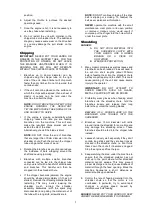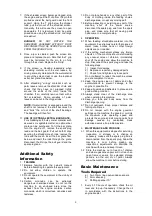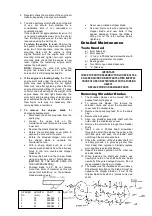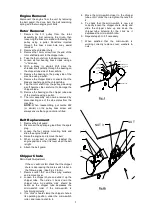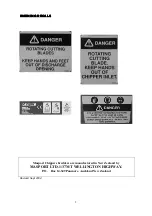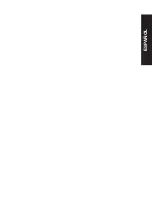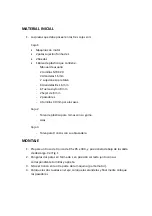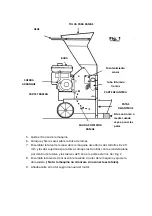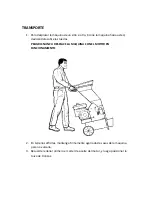
3
1. The separate items you should have in the
two cartons are:-
Carton 1
•
Engine – Chassis assembly
•
A Fuel Tank
•
Two L-shaped legs
•
Two Wheels
•
A Plastic Bag containing
-
an Operation
and
Maintenance
Manual
-
an Engine Booklet
-
2 off M8 x 20 screws
-
2 off 16mm Axle Washers
-
2 off Chute Retainers
-
6 off 8mm x 16mm Washers
-
6 off 8mm Nyloc Nuts
-
2 off 8mm Spring Washers
-
2 off Axle Circlips
-
4 off 30mm Bolts for Chute Handle
Carton 2
•
A plastic chute with rubber flap and metal
plate attached
A Chute handle
Carton 3
•
A Chipper chute with clamp
1. Place a block of wood roughly 95 x 95 x 300
under the front of the discharge chute (see fig.
1)
2. Bolt the two front legs in position. Note that
the legs are right and left-handed. The leg
mounting holes are off centre and should be
toward the rear of the machine.
3. Place the block of wood under the rear of the
machine, near the back axle.
4. Put the wheels on the axles. There should be
an axle washer on the outside only of the two
wheels. Then put the two axle clips on the
ends of the axle.
5. Lift the engine and remove the wooden
packer that is under the engine mounting
plate.
6. Attach the handle to the shredder chute.
7. Attach the shredder chute to the chassis using
two 8mm x 20mm screws and two chute
retainers, with plain washers and spring
washers on the screws at the front and with
two Nyloc nuts outside the chute at the sides.
See Fig. 2.
8. Attach the Chipper Chute to the Chipper Tube
and tighten the clamp. ( The machine will not
start without the Chipper Chute attached. )
9. Add oil and fuel to the engine (see engine
booklet).
1. To move the unit, place a foot behind a wheel
and tilt the unit backwards until it passes its
balance point.
DANGER: NEVER MOVE THE UNIT WHILE
THE ENGINE IS RUNNING.
2. When crossing rough terrain or sloping areas,
hold the handle firmly at each side with both
hands (to prevent tipping). In some instances
it may be easier to walk backwards, towing
the unit.
3. With the chute removed, the unit will fit in
some larger station wagons, but it must be
tied in position if left upright. Once the engine
is filled with oil, it cannot be tipped on its side
unless the oil is drained out.






